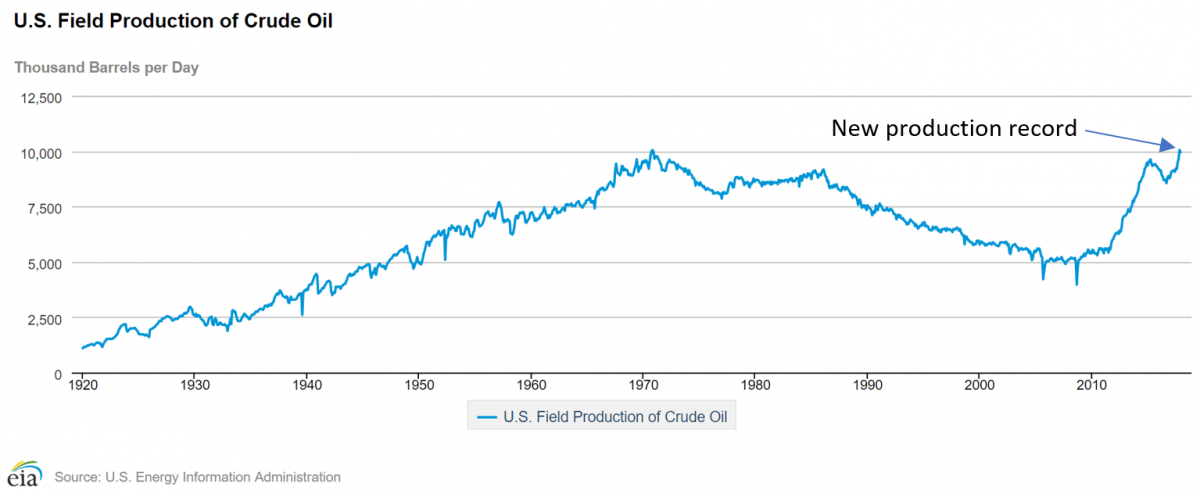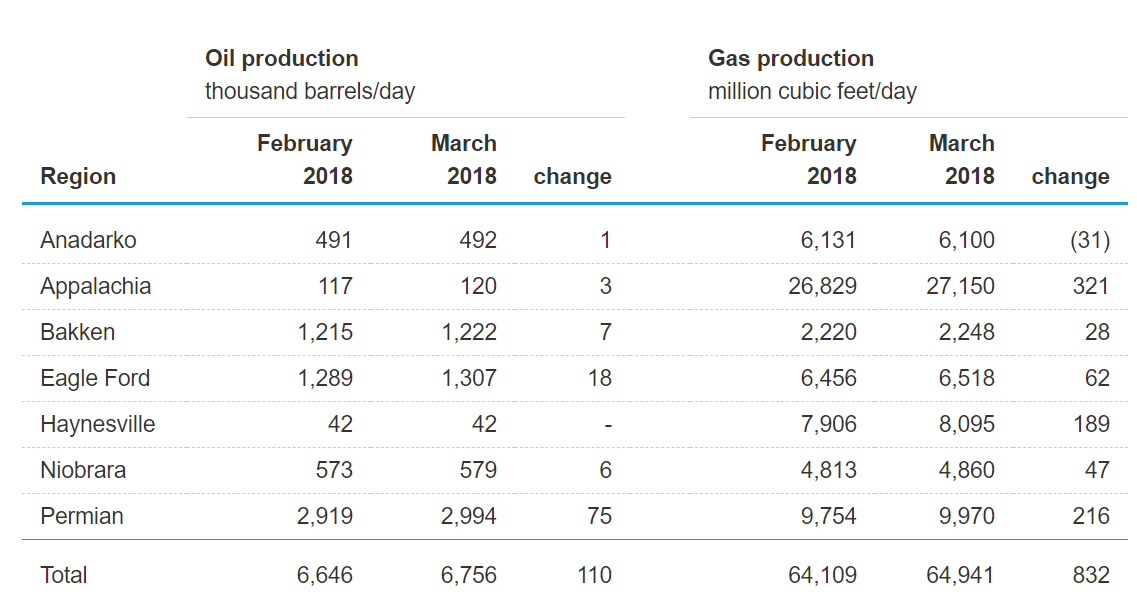A revision in EIA data pushed November 2017 into the #1 all-time spot for monthly U.S. oil production.
In a recent post, I wrote that the U.S. would almost certainly set a new oil production record this year. I noted that the most recent data from the Energy Information Administration (EIA) showed that last November U.S. oil production exceeded 10 million barrels per day (BPD) for the first time since 1970.
Last week the EIA revised November’s oil production upward, which pushed it into the #1 spot for monthly production. The revision increased U.S. oil production in November to 10.057 million BPD, just edging out the previous record of 10.044 million BPD from November 1970.

U.S. monthly oil production
However, many new records should be set this year, as the EIA projects that oil production will reach 11 million BPD by year-end. This would push the U.S. into first place among the world’s oil producers.
But depending on how it is measured, the U.S. is already #1. The 2017 BP Statistical Review of World Energy ranks the U.S. #1 in oil production, but that’s because they include natural gas liquids (NGLs), which have surged in the U.S. along with natural gas production.
The gains in U.S. oil production are being driven by production gains across tight oil plays in the Bakken and Eagle Ford, and especially the Permian Basin — where oil production is approaching a staggering 3 million BPD. (See What Record Oil Production In The Permian Basin Looks Like).

U.S. tight oil and gas production.
However, the continued gains in oil production are helping keep a lid on oil prices. This also increases the pressure on OPEC to prolong production cuts that have helped drain global crude oil inventories.
Should OPEC end the production cuts, oil prices could quickly drop 20-30% from current levels.












Leave A Comment